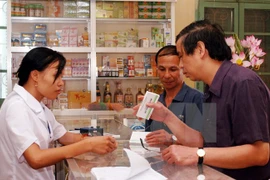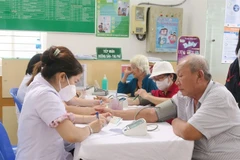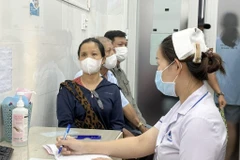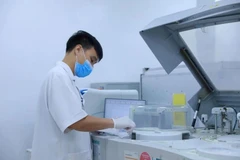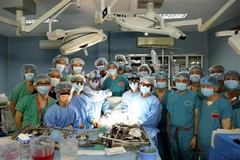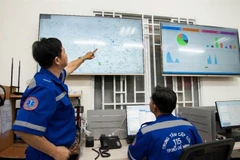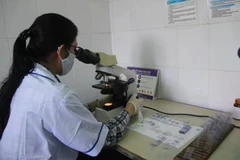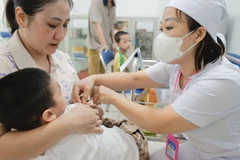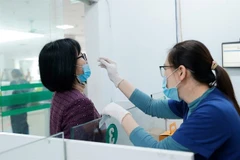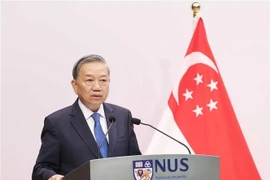 A doctor provides check-up for a patient at Nam Nhoong commune's medical station in Que Phong district, central Nghe An province. (Photo: VNA)
A doctor provides check-up for a patient at Nam Nhoong commune's medical station in Que Phong district, central Nghe An province. (Photo: VNA)
Hanoi (VNA) – Vietnam’s healthcare has gone a long way since the “Doi Moi” (Renewal) Process 30 years ago with improved service quality and equality.
The mortality rate of children aged under one fell from 44.4 per 1,000 in 1990 to 15.2 per 1,000 in 2014, while the under-five mortality rate dropped more than half over the past two decades, from 58 per 1,000 in 1990 to 22.9 per 1,000 in 2014.
The maternal death rate fell two-thirds from 233 per 100,000 live births in 1990 to 60 per 100,000 births in 2014.
The country’s HIV infection rate has been reduced to below 0.3 percent as targeted by the National Target Programme on HIV/AIDS Prevention and Control from 2004 – 2010, while outbreaks of SARS, A/H5N1 and dengue fever have been contained.
The network of communal healthcare units has been expanded with over 11,500 commune-based medical stations spreading from deltas to border and far-flung areas throughout the nation. The network has been recognised as a successful example for other countries to follow.
Vietnam is now home to approximately 13,440 public healthcare establishments, 75 sanatoriums and more than 1,000 general and antenatal clinics.
Hospitals have continued to apply information technology in management while advanced medical techniques, such as organ transplants, endoscopy, IVF, heart surgery and surgery to separate conjoined twins have also become more common.
Vietnam, one of the few vaccine producers in the world, has been certified by the World Health Organisation (WHO) as a country with a fully-equipped national regulatory authority (NRA) that ensures the safety and efficacy of vaccines produced and used.
The country made remarkable progress in 2015, particularly in efforts to curb overcrowding at major hospitals, Health Minister Nguyen Thi Kim Tien said.
Tien took K Hospital, National Endocrinology Hospital and Cho Ray Hospital as examples, saying that patients no longer have to share beds.
Some hospitals even have hotel-standard accommodation facilities, she added.
The Ministry of Health has worked hard to accelerate administrative reforms and develop satellite hospitals to provide quality treatment for more people.
The initial satellite hospital project has brought good results, alleviating the overload at major hospitals. At present, there are 46 satellite hospitals throughout Vietnam linked to city hospitals where satellite staff are trained and given technical updates.
However, existing problems still challenge the sector, notably health access disparities between rural and urban areas, the aging population, deadly epidemics and climate change-related diseases, along with a lack of medical facilities and personnel at local levels.
The ministry plans to further reduce treatment times and improve health workers’ attitudes towards patients to increase patient satisfaction in 2016, while home visits by family doctors, a new service in Vietnam, will be expanded across the nation.
International cooperation will also be intensified for the increased use of advanced medical technologies in hospitals.-VNA




